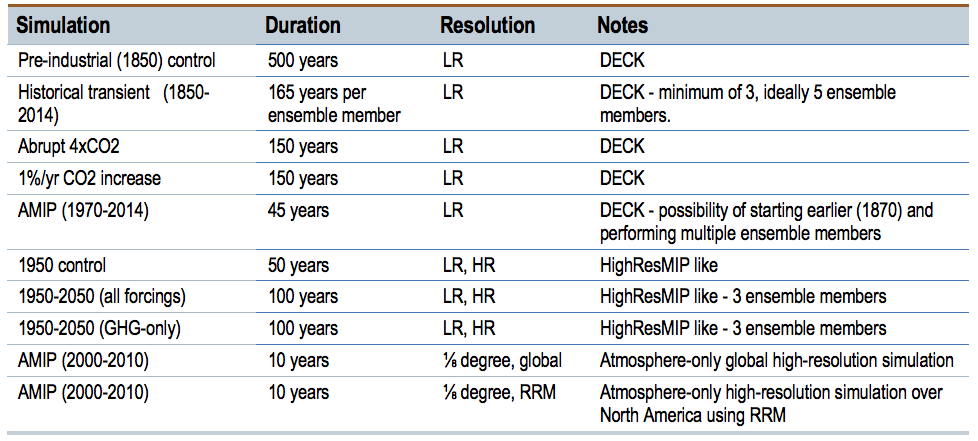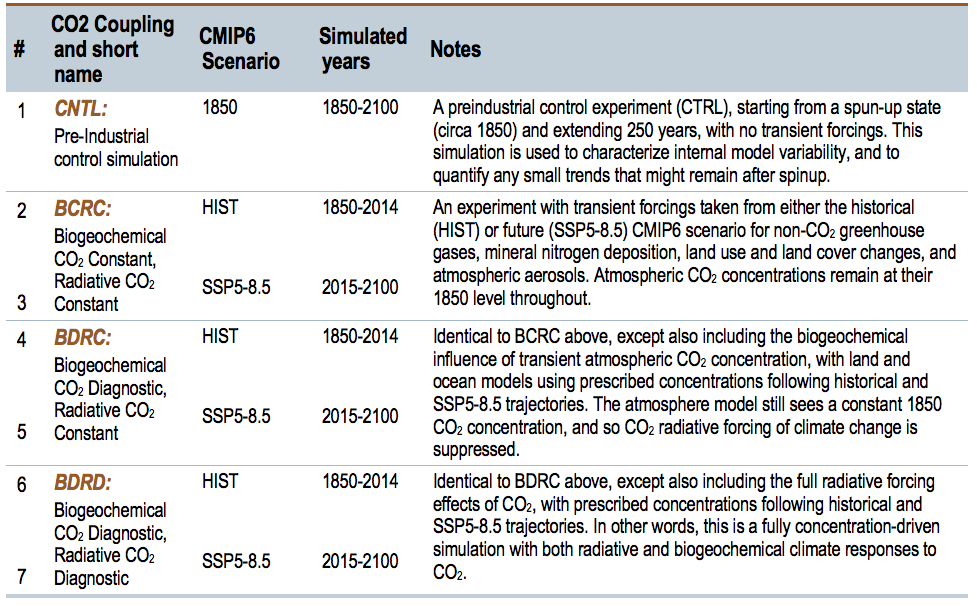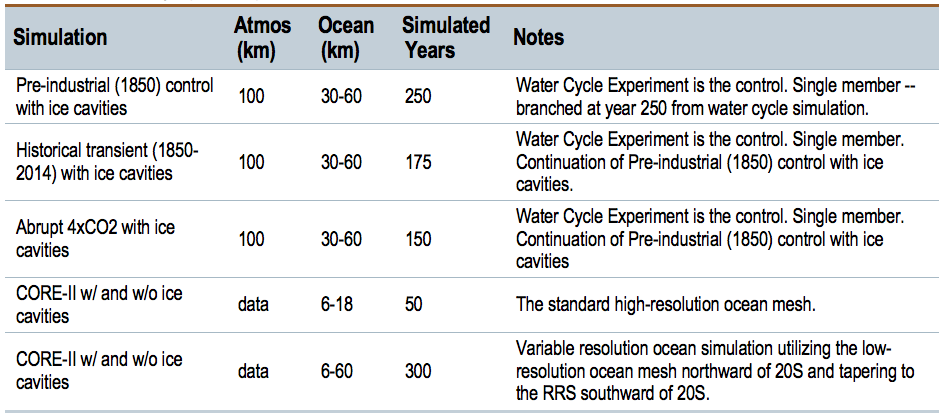v1 Campaign
Each E3SM model version is used in a “simulation campaign” consisting of major simulations designed to address relevant science questions focusing on the water cycle, biogeochemistry, and the cryosphere system.
Water Cycle
V1 SCIENTIFIC QUESTION:
How will more realistic portrayals of features important to the water cycle (clouds, aerosols, snowpack, river routing, land use) affect simulations of river flow and associated freshwater supplies at the watershed scale?
The project hypothesizes that changes in river flow over the last 40 years have been dominated primarily by land use and land cover change (LULCC) and climate change associated with aerosol forcing. During the next 40 years, greenhouse gas (GHG) emissions following the Shared Socio-economic Pathway 5 (SSP5) 8.5 scenario will produce changes to river flow with signatures that dominate the other forcing agents in some major river basins.
To address the science question and test this hypothesis, simulations are being performed using both the low resolution (LR) and high resolution (HR) configurations of E3SMv1, as described previously. Comparisons between LR and HR will help to evaluate the impacts of model resolution on the fidelity of water cycle simulations.
Biogeochemistry
V1 SCIENTIFIC QUESTION:
What are the effects of nitrogen and phosphorous on climate-biogeochemistry interactions, and how sensitive are these interactions to model structural uncertainty?
The experiment has the dual objectives of (1) examining how the inclusion of phosphorus limitation in nutrient cycle representations affects carbon–climate interactions; and (2) investigating the influence of alternative model structures for below-ground reaction networks, stoichiometric flexibility, and photosynthesis on global-scale biogeochemistry–climate feedbacks.
Cryosphere Systems
V1 SCIENTIFIC QUESTION:
What are the impacts of ocean-ice shelf interactions on melting of the Antarctic Ice Sheet, the global climate, and sea level rise?
The objective is to explore factors that influence the melt rates of the Antarctic ice shelf and the impacts of the water fluxes from the ice shelf cavities on ocean water mass properties and currents to provide insights on the stability of the Antarctic Ice Sheet (AIS) and potential changes in the global ocean circulation in the future.
Status of the v1 Campaign
The current status of each of the v1 campaigns





